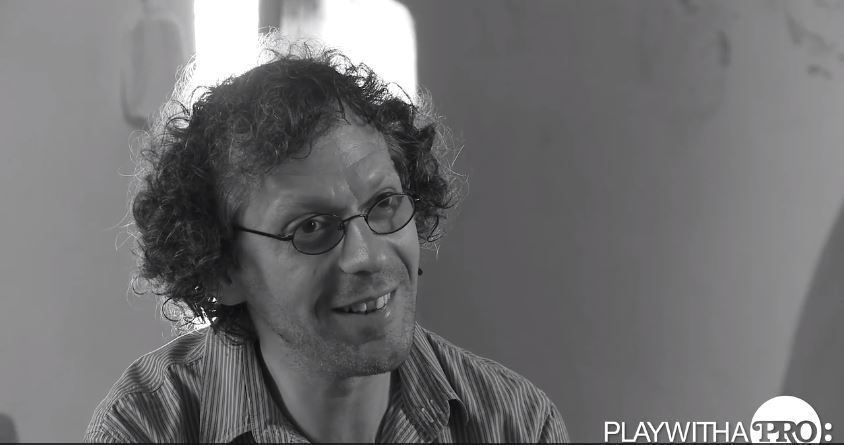In conversation with Sergio Azzolini
Sergio Azzolini is well know not only for his excellent technique and sound, but also for his passionate approach to music. Seriously, when you hear him talk about the bassoon, you can’t help feeling that his love for music is contagious. Here, at Play with a Pro we have had the pleasure to film his very first video productions: Bassoon Masterclass - Vivaldi - Largo and In Conversation with Sergio Azzolini. To support all the bassoon players out there, we thought of writing this blog post and share with you some of Azzolini’s thoughts on the bassoon. So are you ready to get inspired by the maestro?
1. Why did you choose the bassoon?
I think in many cases it’s a coincidence. Maybe you don’t meet the bassoon, maybe the bassoon meets you. In my case it was absolutely a coincidence. My wish was to become a painter, so as a child I used to spend a lot of time at home and trying to find an explanation by painting. Then you grow up and the wish is always there and then you come to one age when you have to make some decision. So I spoke with my family and told them that I want to express myself with colors. There was no arts school in my little city in Italy, so my parents said that since I have an artistic feeling then I could try with music. So I tried many instruments and they game me a bassoon in the hand. Now to be sincere, I am happy to have this way of expressing.
2. How did you know that bassoon was something that you could pursue as a career?
At the very beginning, I was unhappy with the bassoon. I found it too low in the register. I had the experience with the oboe in the entry exam at the music school. I found that the oboe was singing and more expressive. When I came to the first class and the jury decided that my instrument has to be the bassoon, I was disappointed. So I ment my teacher and told her “Why this instrument? I want the little one, it’s more singing.” He said “No, you play this”. For long time I did, but I couldn’t find really the connection, but now I am very happy with this instrument. The bassoon is like a chameleon. It’s not always in front, so it’s also made for someone who enjoys being together with other instruments.
3. How did you develop your technique?
I was practicing a lot as a child. Now I feel a bit guilty because I don’t practice as much today. I was not thinking, just playing all the day and also in the night. I was not happy to study at home, so I spent a lot of time at the conservatory. For me practicing was not practicing, it was like I am alone, it’s quiet, it’s beautiful. I remember, one day I was there, I was melancholic and my mood was not the best. So I played and played and played and then I realised that my mood is going to the instrument. It was a little magic moment and I said that I have a bassoon to express. From that moment I said ok to music. Before I was always thinking about painting. This means that practicing was not practicing to me. It wasn’t so technical, it was just spending time that for me was necessary.
4. What are your thoughts on sound?
Sound is one of the most important elements in music, because if we ask each other what is music I say that music is the art of the sounds. Many sounds, because we play different sounds, different notes and we can also change the sounds. For me sound is everything, it’s expression, it’s mood, it’s color and emotion. It’s not to be always beautiful because then it’s static. My own sound...I want it to be expressive. Sometimes I can, sometimes I can’t. It also depends on what instrument I am playing, because the sound is not only me and my vision, but also the instrument helping me to find this expression.
5. How do you choose a bassoon?
I look at the flexibility. For me it is not very important that the sound is big, but it should be flexible. The second priority is the big sound because if it’s big I can just relax and say, I can play without forcing too much to make the sound larger. I find my sound more in the baroque instrument than in the modern. A modern instrument is very stable, so the effect from the modern instrument when you play baroque, is that you try to be stable on the baroque otherwise the sound gets too unstable. If you play a modern instrument, you know the stability. If you play a baroque instrument you try to be as stable as possible. If you play too stable on the baroque you feel that it’s not its nature because the instrument needs to be a little unstable. Instability is fragility, fragility is expression by moving the sound. The baroque bassoon influences the modern because it is closer to the voice.
Looking for more inspiration? Check our other Play with a Pro bassoon artists Kristian Ole Dahl and Gustavo Núñez.
